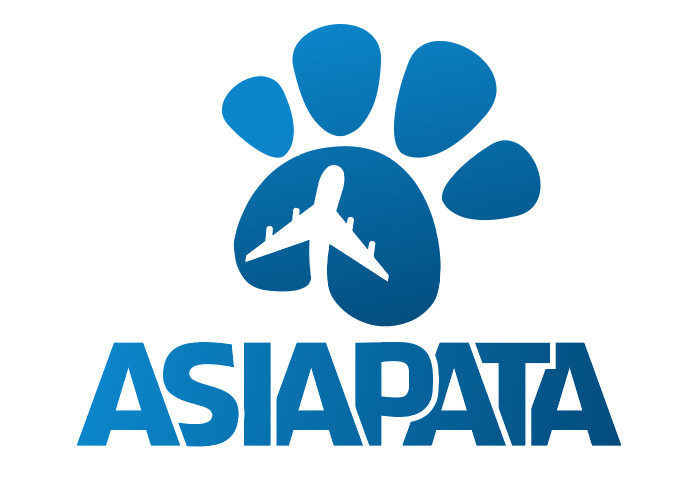1. Introduction
International pet transport has grown significantly as more families relocate, travel long-term, or adopt pets from abroad. Yet many owners wonder: “Are puppies and kittens under 3 months old allowed to travel abroad?” The answer is not as straightforward as you might think. Most countries enforce strict rules to prevent the spread of rabies and other diseases, while airlines impose minimum age requirements for animal welfare.
This comprehensive guide explores global regulations, the science behind age restrictions, potential risks, and practical advice for ensuring a safe, stress-free journey for your furry companion.
2. Why Age Restrictions Exist for Pet Travel

2.1 Health and Safety Concerns
Young puppies and kittens are vulnerable to temperature fluctuations, dehydration, and stress. Their immune systems are still developing, making them highly susceptible to illnesses during long flights or quarantine periods.
2.2 Rabies Vaccination Requirements
Most countries require proof of rabies vaccination for incoming pets. Rabies vaccines are typically administered no earlier than 12 weeks of age. Furthermore, many destinations—such as the EU and Australia—require an additional 21–30 day waiting period after vaccination before the pet can travel. This makes transporting pets under three months virtually impossible under standard guidelines.
2.3 Preventing Disease Spread
Rabies and other transmissible diseases can devastate local ecosystems and public health. Age limits and vaccination schedules are essential safeguards to prevent outbreaks.
3. International Rules and Airline Policies
3.1 European Union
The EU Pet Travel Scheme mandates that dogs and cats must:
-
Be at least 15 weeks old (12 weeks for vaccination + 21 days wait).
-
Have an ISO-compliant microchip.
-
Possess an EU pet passport or official health certificate.
3.2 United States and Canada
The U.S. Centers for Disease Control and Prevention (CDC) generally requires dogs to be 12 weeks or older and vaccinated against rabies at least 30 days before entry. Canada follows similar guidelines, though rules vary by province.
3.3 Australia and New Zealand
These countries have some of the strictest biosecurity regulations in the world. Puppies or kittens under 3 months old are not accepted. Even older pets must undergo blood tests, import permits, and lengthy quarantine.
3.4 Japan, Singapore, and Other Asian Countries
Japan requires advance notification and multiple vaccinations, making it impossible for pets under 3 months to enter. Singapore mandates microchipping, rabies vaccination, and a waiting period. Other Asian nations, including Thailand and South Korea, follow similar protocols.
3.5 Airline Guidelines
Most major airlines—including Emirates, Singapore Airlines, and Delta—refuse to transport puppies or kittens under 8 weeks old, even for domestic flights. Internationally, the minimum is often 12 weeks. Some carriers may impose even stricter policies.
4. Are There Any Exceptions?

In rare cases, exceptions may apply:
-
Intra-EU Travel: If the puppy or kitten is traveling within the same country or under specific intra-EU agreements, exemptions might be possible.
-
Accompanied by the Mother: Some jurisdictions may allow very young animals to travel if they remain with a fully vaccinated mother.
-
Special Permits: Certain countries may issue special waivers, but these are extremely rare and often require compelling reasons (e.g., scientific research).
However, these exceptions are not guaranteed, and attempting to bypass standard regulations can lead to refusal of entry, quarantine, or even euthanasia of the animal.
5. Risks of Traveling with Young Pets
5.1 Health Risks
-
Stress and Trauma: Young animals are less able to handle loud noises, turbulence, and unfamiliar environments.
-
Dehydration and Hypothermia: Puppies and kittens under 3 months cannot regulate body temperature effectively.
-
Exposure to Diseases: Without vaccinations, they may contract life-threatening illnesses.
5.2 Financial and Legal Risks
-
Airlines may deny boarding at the last minute.
-
Customs or border control may seize or quarantine the animal, leading to expensive fees.
-
Some countries impose fines or ban future pet imports for non-compliance.
6. Best Practices for Safe Pet Export
6.1 Wait Until the Pet Is Old Enough
The safest option is to delay travel until your puppy or kitten is at least 3–4 months old. This allows time for vaccinations, recovery, and a stronger immune system.
6.2 Complete All Vaccinations and Health Checks
-
Rabies vaccine administered at 12 weeks or later.
-
Additional vaccines (distemper, parvovirus, feline leukemia, etc.).
-
Full health examination by a licensed veterinarian.
6.3 Microchipping
Ensure your pet has an ISO 11784/11785-compliant microchip. The microchip number must match all travel documents.
6.4 Obtain Required Documents
-
Official health certificate issued by an accredited veterinarian.
-
Import/export permits if required.
-
Airline-approved travel crate that complies with International Air Transport Association (IATA) standards.
6.5 Work with Professional Pet Transport Companies
A trusted service like Asiapata can:
-
Navigate complex import/export regulations.
-
Arrange for safe, climate-controlled transport.
-
Provide advice tailored to your destination country.
7. Preparing Your Pet for Travel

7.1 Crate Training
Start crate training weeks in advance. Allow your pet to associate the crate with comfort by placing toys and bedding inside.
7.2 Reduce Stress
Introduce your pet to new environments gradually. Familiar scents—like a blanket from home—can help reduce anxiety during travel.
7.3 Food and Hydration
Feed a light meal a few hours before departure and ensure access to water until check-in. Avoid overfeeding, which can cause nausea during transit.
8. Country-Specific Examples
8.1 Traveling to the European Union
-
Minimum age: 15 weeks.
-
Required: Rabies vaccination, microchip, EU health certificate.
-
Quarantine: Not typically required if all paperwork is correct.
8.2 Traveling to the United States
-
Minimum age: 12 weeks.
-
Rabies vaccination: At least 30 days before arrival.
-
May require additional paperwork for certain states or territories.
8.3 Traveling to Australia
-
Minimum age: 3–4 months (practical minimum due to vaccination schedules).
-
Additional requirements: Blood tests, import permits, and up to 10 days in quarantine.
9. What to Do If You Must Travel Before Your Pet Reaches 3 Months
If you have no choice but to relocate before your puppy or kitten is old enough:
-
Find Temporary Care: Ask friends, family, or a reputable boarding facility to care for your pet until it meets travel requirements.
-
Stagger Relocation: One family member can stay behind temporarily with the pet.
-
Consult Authorities Early: Contact the destination country’s agricultural or veterinary department for advice.
10. Common Misconceptions
-
“Small pets are easier to sneak through.”
Border controls are strict, and airlines coordinate with customs. Attempting to bypass rules risks confiscation. -
“Private jets or couriers are exempt.”
Most countries apply the same health and vaccination rules regardless of transport method. -
“My pet is healthy, so vaccination isn’t necessary.”
Rabies vaccination is a legal requirement in most places, not just a health recommendation.
11. Case Studies and Real-Life Experiences
Case Study 1: Failed Attempt to Fly with a 10-Week-Old Puppy
A traveler attempted to fly from Bangkok to Paris with a 10-week-old puppy. Despite a health certificate, the airline refused boarding at check-in due to EU regulations. The traveler had to delay their trip and pay extra boarding fees for the puppy.
Case Study 2: Successful Relocation with Proper Planning
A family moving from Vietnam to Canada waited until their kitten was 4 months old, completed all vaccines, and used a professional pet transporter. The kitten arrived healthy and stress-free after a smooth process.
12. Final Checklist Before Traveling with Your Pet
-
Verify destination country’s regulations at least 3–6 months in advance.
-
Complete rabies vaccination and required waiting periods.
-
Microchip your pet and match numbers on all documents.
-
Book pet-friendly airlines early and confirm crate requirements.
-
Prepare a backup plan in case of delays or cancellations.
13. Conclusion
In most cases, puppies and kittens under 3 months old are not permitted to travel abroad due to vaccination requirements, health risks, and international biosecurity laws. While rare exceptions exist, they are difficult to obtain and carry significant risks.
For your pet’s safety and to avoid legal or financial complications:
-
Wait until your puppy or kitten is at least 3–4 months old.
-
Complete all necessary health checks, vaccinations, and paperwork.
-
Partner with a professional pet transport service like Asiapata to navigate the process smoothly.
By following these guidelines, you’ll ensure your furry friend’s journey is safe, legal, and stress-free—allowing both of you to start your new adventure on the right paw.
Read more:
LATEST CHANGES IN INTERNATIONAL PET TRANSPORT REGULATIONS
Essential Vitamins and Supplements for Pets – A Complete Guide for Responsible Pet Owners

